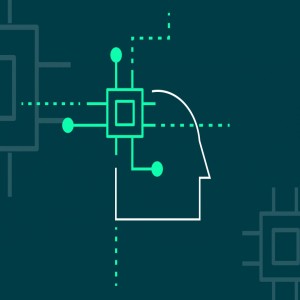All over the world, from the United Kingdom to Australia, educators, administrators, and policy makers are determining their stance on Artificial Intelligence (AI) writing and the use of ChatGPT in the classroom. They are considering the challenges and benefits of this technology and whether or not to formally integrate it into the curriculum or prohibit it altogether.
Is ChatGPT appropriate for kids?It depends on your perspective. Some schools have banned ChatGPT’ s use “due to concerns about negative impacts on student learning, and concerns regarding the safety and accuracy of content.” Jenna Lyle, an education department spokesperson for New York public schools (USA), announced that, “While the tool may be able to provide quick and easy answers to questions, it does not build critical-thinking and problem-solving skills, which are essential for academic and lifelong success.”
Others, like Kevin Roose of the New York Times, feel that this may be an opportunity for the education sector to radically shift how it approaches teaching. After speaking with dozens of educators, Roose believes “schools should thoughtfully embrace ChatGPT as a teaching aid — one that could unlock student creativity, offer personalized tutoring, and better prepare students to work alongside A.I. systems as adults.” Even the attendees at the International Center for Academic Integrity’s (ICAI) annual conference in March debated the pros and cons of banning AI writing in schools.
And as important as educators, administrators, policy makers, and students are in this conversation, it is imperative to prioritize including parents and families in the dialogue as well. Because while educators are leading the charge in modeling and providing guidelines for the thoughtful application of these tools in the classroom, the hours outside of school are just as essential in establishing and practicing behaviors with integrity.
A communicated policy means everyone is on the same page. A consistent approach shared by both instructors and caregivers means students will always know what is acceptable whether they are in school or at home. And while this disputed topic will certainly continue to evolve, with organizations shifting their approach as the technology itself changes, an ongoing conversation between school and home is crucial, centered on supporting student learning and growth.
How can teachers talk to parents about ChatGPT?There are myriad reasons why an instructor, school, or district takes position on this technology. No matter what the approach, the communication between school and home creates transpicuous expectations for the learning environment. Here are three ways educators can discuss ChatGPT and AI-writing tools with parents and families.
Be curious and ask questionsAt the beginning of the school year, educators often give introductory exams to assess their students’ baseline knowledge. Asking questions at the start of the conversation with parents and families does the same thing, establishing where a student and their caregivers might be on their AI-writing journey:
- What does the family know about ChatGPT and AI writing?
- How do they approach AI in their home?
- Do they have rules or policies already established for homework or personal use?
- What are their concerns or questions regarding AI writing tools?
Educators should anticipate that there may be uncertainty in this conversation, as many families are still trying to determine how they feel about AI. Offer Turnitin’s glossary of AI terms as a resource so everyone can be aligned on the words being used in the conversation. Create an ongoing list of articles from reliable sources in the media to help families stay connected to the ever-changing landscape. And whether these questions are discussed in person or via an at-home survey, this information can help to build trust as families and educators work together to create a supportive learning environment for students.
Be clear about academic policies and the reasons behind themAs mentioned above, policies around how to approach AI in the classroom differ from place to place. Because educators are often the bridge between life at home and learning at school, it’s essential to have clear messaging prepared for families that aligns with school and district policies. The why behind a rule is just as important as the rule itself. This means that students and their caregivers can be absolutely certain that they are following guidelines set forth by their administration and wholly understand why that rule is in place to ensure student growth.
A printable document or a landing page with FAQs around the use of AI in assignments can be a helpful resource for families and students, explaining the reasons behind the decisions. At minimum, it should spell out:
- The policy itself and why a school has determined this is the best approach to support student learning outcomes
- If/when the use of ChatGPT and AI writing tools is appropriate
- How to properly cite ChatGPT and AI tools in writing
- The consequences of inaccurate or missing citations and the escalation policy
- Individuals that can be contacted or literature referenced as resources when questions arise
Educators will also want to include AI in their honor code and curriculum. Furthermore, if a school is using tools like Turnitin’s Feedback Studio, it can be helpful for educators to explain to parents and families how the tool is used on assignments in relation to AI writing.
Be open to change and ongoing conversationThis will not be a one-and-done dialogue. AI writing technology is evolving daily and thus, educators and administrators will need to stay updated in order to keep families informed. A course or institutional policy may change from one week to the next because of a technological update and it will be integral to inform parents and families as soon as possible. Mid-quarter adjustments and redesigning full courses may take place for instructors who seek to, as Northwestern University’s Searle Center (USA) puts it: “[explore] the possibilities and [avoid] the pitfalls of teaching in a world of AI tools.”
How can educators use ChatGPT?Ongoing education around and experience with these tools means students and their caregivers can increase their confidence in and understanding of this technology. Educators may want to:
- Encourage parents to explore ChatGPT and other AI with their children, discovering the possibilities and limitations of the tools.
- Provide community learning opportunities to learn how to use AI software effectively and include both students and families. A teacher could, for example, lead an after school session on how to iterate on specific prompts to get a more meaningful, accurate result from ChatGPT.
- Introduce other AI software beyond ChatGPT to families and students to familiarize the learning community with Large Language Models and Artificial Intelligence software. Pressto, a generative AI tool that creatively scaffolds the writing process, is starting to be used in schools around North America as a unique way to teach writing.
- Utilize and share documents that specifically address AI in the classroom, like Turnitin’s collection of educator-created resources.
Across the spectrum, students, educators, and administrators are bearing witness to how AI is being used (and misused) in the classroom. A recent Walton Family Foundation survey found that within two months of its introduction, a 51% majority of teachers reported using ChatGPT, with 40% reported using it at least once a week, and 53% expecting to use it more this year. 22% of students said they use the technology on a weekly basis or more.
The same survey reported that a clear majority of students (63%) and teachers (72%) agree with the statement that “ChatGPT is just another example of why we can’t keep doing things the old way for schools in the modern world.”So whether ChatGPT feels like a threat, a possibility, or perhaps a blend of both, this is undeniably an opportunity for students, instructors, administrators, and families to partner in order to better understand the impact of Artificial Intelligence on education. AI technology is here to stay and we have the chance to work together to make it work for us.





